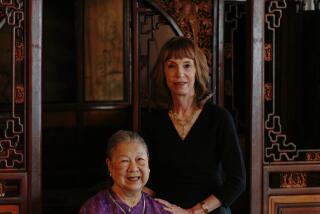Life on the edge
Imagine you’re a time-traveling reporter sent back 150 years to a Deep South plantation. The owner is a genial, considerate host; by the standards of his place and time, he’s a lenient master. He expects you to write an admiring story about the efficiency of his operation and the quality of his cotton. But how can you ignore the brute fact of slavery? Norwegian journalist Asne Seierstad found herself in a similar situation in Afghanistan late in 2001, after accompanying the Northern Alliance forces into Kabul. She met a bookseller she calls Sultan Khan -- an apt alias, as it turns out -- who let her stay with his family for several months and write about all she saw and heard. The Khans are wealthier and better educated than most Afghans, though they live in a war-damaged apartment building with little water or electricity. Three speak English: Sultan himself; his son Mansur, 17; and his sister Leila, 19. Seierstad speaks seven languages but not the Persian dialect used by the Khans, so all she learns about them is filtered through these three sources.
By Afghan standards, Sultan is liberal, humanist, even heroic. His efforts to save his country’s literary heritage and stock his shops with works of all points of view angered Communists and the Taliban alike. He was beaten, imprisoned; his books were burned. “In his heart he wanted Afghanistan to be a modern country, and he talked warmly about the emancipation of women,” says Seierstad. “But within the family he remained the authoritarian patriarch.” It’s the medieval, oppressive side of Sultan that shows up most clearly in “The Bookseller of Kabul.” Understandably, he felt that Seierstad had scanted his heroism and abused his hospitality. After this book appeared in Europe, Sultan publicly denounced it -- in particular its assertion that relatives of his murdered a woman accused of being unfaithful to her husband. Seierstad wrote that the woman’s brothers smothered her with a pillow; then, to save face, the family claimed she had died in an electrical accident.
Given the language barrier, misunderstandings and distortions of fact were possible, even likely. But it’s also likely that the Khan women, through Leila, opened up because nobody else had ever taken much interest in their thoughts and feelings. Understandably, Seierstad felt she had been thrust back into a Dark Age, in which the patriarch’s word is law, sons obey their father absolutely and daughters are little more than merchandise to be sold to the highest bidder. “If the families don’t have rules, how can we form a society that respects rules and laws, and not just guns and rockets?” Sultan asks. But this champion of literacy orders his sons to quit school and work 12-hour days for him. In his 50s, he takes a 16-year-old second wife. Suddenly the status of the first wife is marginal and humiliating; she must live in Pakistan, tending his business there. When a carpenter building shelves for Sultan steals some postcards, he is prosecuted mercilessly. “Don’t be soft,” Sultan tells the reluctant Mansur, whose adolescent itches don’t extend to rebellion. Leila, a hard-working, intelligent girl exploited as a domestic drudge, dreams of a teaching career and marrying a kind man. But her likely husband is a “lout” with an even bigger family, for whom she will have to cook and clean for the rest of her life. Seierstad focuses on such dramas. Bridging the gender gap as no Afghan could, she also accompanies Sultan on business trips, visits the wild tribal areas where Osama bin Laden may be hiding -- and, most memorably, dons a burka, the garment prescribed by Islamic fundamentalists, and describes what it’s like to go about fluttering, billowing, half-suffocated and half-blind. This is a story of individuals struggling for happiness in a country ruined by 20 years of war, where traditions upheld even by liberals like Sultan thwart the reforms of the new U.S.-backed government. Is it a true picture of everyday life in Afghanistan? We can’t know. But it’s one of the few pictures we have. *
More to Read
Sign up for our Book Club newsletter
Get the latest news, events and more from the Los Angeles Times Book Club, and help us get L.A. reading and talking.
You may occasionally receive promotional content from the Los Angeles Times.






